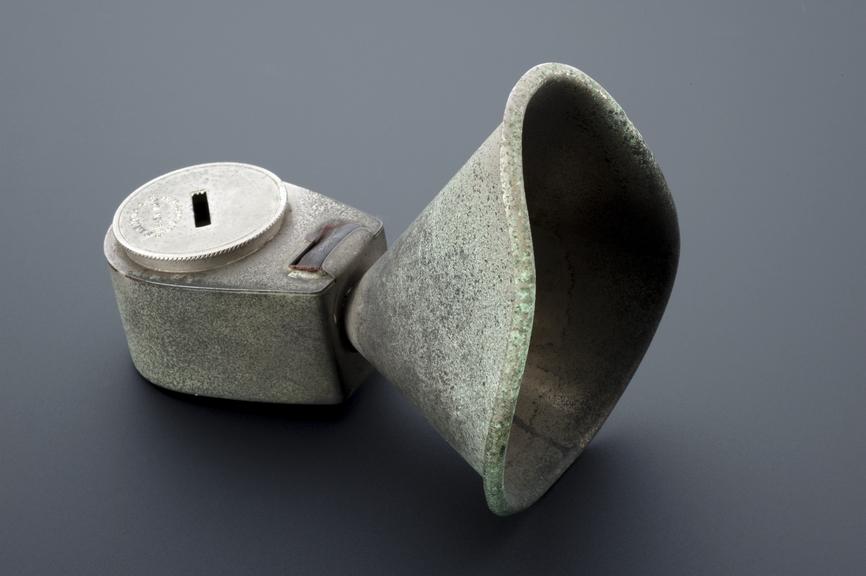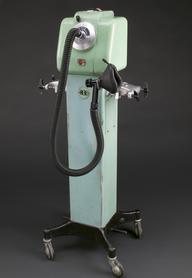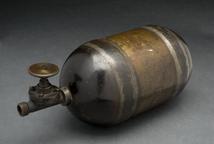


Murphy's inhaler for chloroform anaesthesia, made by Fanning and Co. , Dublin, 1848-1900; MAKER MAY BE FANNIN AND COMPANY
Inhaling anaesthetics was the most popular way of numbing the patient during painful procedures. Edward William Murphy (1802-1877) invented this chloroform inhaler in 1848-1850.
The main drum held a sponge soaked with chloroform. This sponge would have been heated in warm water for thirty minutes, squeezed out and chloroform dropped on to it. The heat from the sponge caused the chloroform to evaporate. The vapours were breathed in though the mouth piece.
Made by Fannin and Co, this type of inhaler was mostly employed in obstetrics and child birth as it was small and easy to use. It could be held by the patient, leaving the doctor free to aid with the birth. Chloroform was first used as a pain reliever in childbirth in 1847.
Details
- Category:
- Anaesthesiology
- Collection:
- Sir Henry Wellcome's Museum Collection
- Object Number:
- A625259
- Measurements:
-
overall: 102 mm x 75 mm x 133 mm, .16kg
- type:
- inhaler




